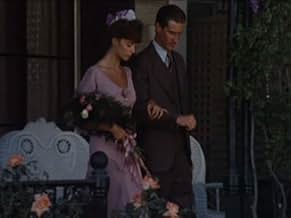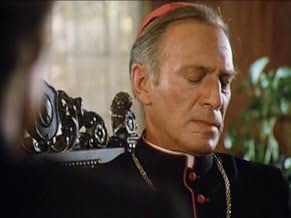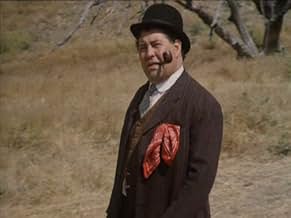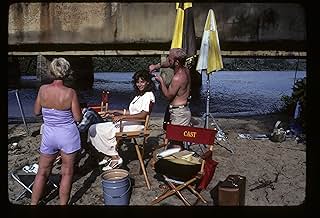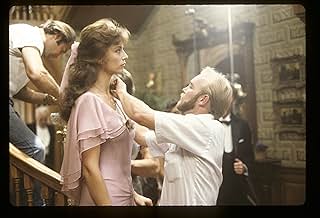Les oiseaux se cachent pour mourir
Dans l'arrière-pays aride australien des années 1920, un prêtre catholique et la belle nièce du propriétaire d'une immense bergerie se retrouvent impuissants devant la volonté de Dieu, tourm... Tout lireDans l'arrière-pays aride australien des années 1920, un prêtre catholique et la belle nièce du propriétaire d'une immense bergerie se retrouvent impuissants devant la volonté de Dieu, tourmentés par le désir.Dans l'arrière-pays aride australien des années 1920, un prêtre catholique et la belle nièce du propriétaire d'une immense bergerie se retrouvent impuissants devant la volonté de Dieu, tourmentés par le désir.
- Récompensé par 6 Primetime Emmys
- 15 victoires et 18 nominations au total
Avis à la une
While the main thrust of this story and film appears on the surface to be the love of a Roman Catholic priest for a young girl whom he sees grow into adulthood, the underlying, truly poignant aspect of this story is about the long-term effects of what happens to children when mothers love one child more than another. This theme is the real heart tugger here. Meggie is an afterthought to her mother Fee until the very end of the story (Frank is her favorite child, even though he is troubled, because Frank was the love child of a pre-marital affair), and later on when Meggie becomes a mother Dane is her favorite child (also a product of a clandestine love), and her daughter Justine is the afterthought.
It is this basic lack of love that each child feels from his or her mother that determines the choices they make in life (i.e. Meggie choses to love someone who cannot commit to her, Justine choses to avoid love altogether and throw herself into acting to escape reality, Frank goes off and kills a man because he cannot deal with loving his mother too much, Ralph reveals his mother abandoned him early so he too inclines towards a non-committal type of love with Meggie and escapes through the church, etc.)
The pattern develops early and continues throughout the lives of the Clearys. That is why, to me, the most profoundly moving scenes in this entire series are right near the end: 1) when the old Fee has to tell Meggie that her son Dane has died, and she caresses Meggie's face for the first time in both their lives, and 2) the scene in the stable barn, between Meggie and Justine, as they confront the truth: that Meggie does love Justine, but Dane WAS the favorite child, for reasons beyond Justine's control. In hugging Fee and crying in grief, and in resolving her differences with Justine, Meggie finally finds the peace she needs in life; she is then able to let go of Ralph when the inevitable takes him from her for good.
This miniseries was the Australian outback's answer to "Gone With The Wind". Only this time it's Cardinal DeBricissart (Richard Chamberlin) that's the Scarlett O'Hara and Meggie Cleary (Rachel Ward) that's the Rhett Butler. And yes, it cries for a sequel that can never be made. And yes, not all love stories have happy endings.
And there are some sequences that do not depend on a music score, such as the touching climactic scene with Meggie and Justine in the barn.
But that's just what makes a miniseries a classic. This is not some cheap-skate adaptation of a best selling book...this is the way novels should be made.
We can learn so much about love, forgiving and humility from this story. I also loved how in the end Meggie and her mother finally come to understand one another and her mother is able to show her the love she has longing for. It's a great reminder to not put off showing love to those close to us, but to be like Meggie and give it whether it is given or not.
If it's been a while see it again, because your perspective has changed and it will mean something different to you today.
If you have never seen it before, I think it is well worth the time you'll invest in seeing it. But be sure to grab some tissues.
Le saviez-vous
- AnecdotesRachel Ward and Bryan Brown fell in love on the set. They were married in 1983 and have three children.
- GaffesThe name of the farm is mispronounced. It is named after the Irish town Drogheda. The American cast did not know that 'gh' in Irish is pronounced like an 'h' in English. The cast said Drow-Geeda whereas the proper pronunciation is Dro-huh-duh, where Dro is pronounced like in "drop".
- Citations
Ralph de Bricassart: [telling the legend of the thorn bird to Meggie] There's a story... a legend, about a bird that sings just once in its life. From the moment it leaves its nest, it searches for a thorn tree... and never rests until it's found one. And then it sings... more sweetly than any other creature on the face of the earth. And singing, it impales itself on the longest, sharpest thorn. But, as it dies, it rises above its own agony, to outsing the lark and the nightingale. The thorn bird pays its life for just one song, but the whole world stills to listen, and God in his heaven smiles.
Young Meggie Cleary: What does it mean, Father?
Ralph de Bricassart: That the best... is bought only at the cost of great pain.
- ConnexionsFeatured in The 35th Annual Primetime Emmy Awards (1983)
- Bandes originalesMain Title
Written and Performed by Henry Mancini
Meilleurs choix
- How many seasons does The Thorn Birds have?Alimenté par Alexa
Détails
- Date de sortie
- Pays d’origine
- Langue
- Aussi connu sous le nom de
- The Birds Hide to Die
- Lieux de tournage
- Sociétés de production
- Voir plus de crédits d'entreprise sur IMDbPro
Contribuer à cette page




